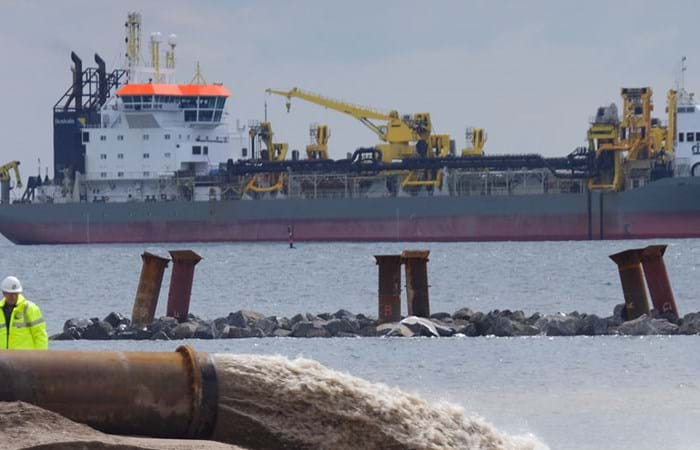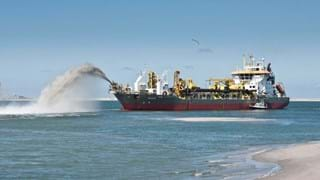Newbiggin by the Sea was once a seaside resort, with the residential area focused around the bay. The beach has severely eroded over the years. If the coastline would continue to recede, sea walls could begin to collapse, imperilling coastline properties. The falling beach levels and increased risk of seawall failure led to a strategy and proposal to import beach fill, along with construction of an offshore breakwater to retain material. Boskalis expanded the existing beach and protected it from erosion.
The project involved:
- Replenishing the beach with 500,000 tonnes of new sand;
- Building a 200-meter breakwater in the bay to ensure new sand is not eroded;
- Enhancing the beach promenade to make the area more attractive to visitors and to allow them a good view of ‘The Couple’.

